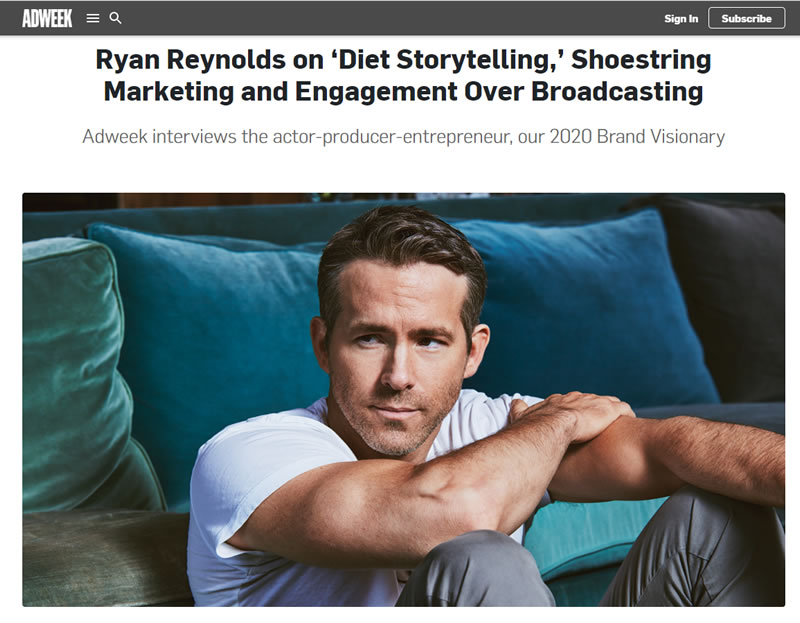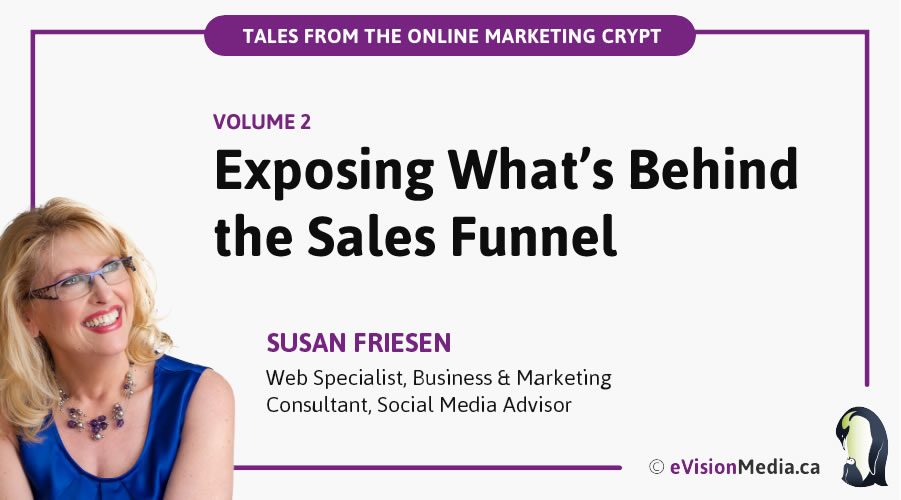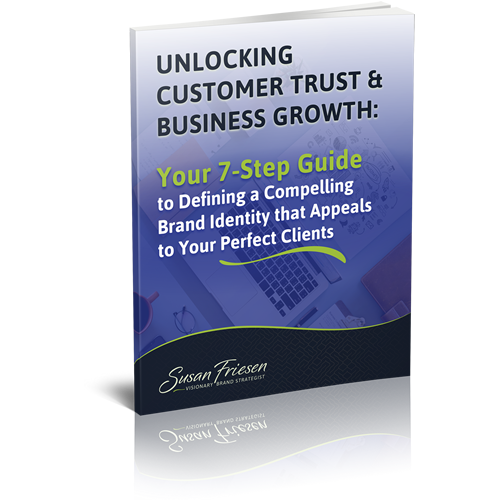Tales from the Online Marketing Crypt – Vol. 2
In my last (and first) Tales from the Marketing Crypt, I asked readers what their biggest pet peeve was and wow, you guys have a lot of them!
I’m not surprised one bit. I find many are also my own pet peeves, which is one of the reasons why I am writing these pull-back-the-curtain types of posts.
One response I got in particular I chose to write about today.
This person wrote: “Love this!🙂 I dislike the continual upsell. Click here for one thing, then another upgrade, then another upgrade, etc.”
Do you find that annoying too?
So here’s the deal behind what’s happening.
And it’s not as cut-and-dry as you think.
What we know about online stores or eCommerce shopping is relatively new. Before online shopping merged, mail-order catalogues were how people sold items with or without the need for a brick-and-mortar store.
Remember how excited we got when the Sears Catalogue came in the mail and we could pick out our Christmas wish list from it? Or how about the Columbia House Music Club (who eventually filed for bankruptcy in 2015), when we’d get those boxes of CDs to listen to each month? If not, then I just aged myself…
I digress.
When online shopping emerged, most business owners shifted their efforts online but still closely mirrored the mail-order catalogue system, which became what we know now as the traditional shopping cart model.
The shopping cart model has the customer come to the site, find a product they like, click the checkout button and make their purchase.
Many store owners still follow this model today. There’s nothing wrong with it at all. But there is a better way to market that store, if done correctly, which I’ll share in a bit.
Now here’s where things went off the rails a bit. When business owners realized, “Hey, I could sell my online program, eBook, digital offering that way too!” things started to evolve. Instead of focusing on mailing the direct sales letters, they realized the online world was a far better way to go.
And just like that, sales funnels were born.
Instead of sending a consumer to the home page of a website and hope they find the store and products within, sales funnels move customers to a landing page. This page on the website strictly focuses on one item for sale—and one item only.
The whole page is written with the intention of focusing on delivering a compelling pitch and persuading the visitor to take action: convert to a sale.
Sales funnels were the cat’s meow, the golden egg, the answer to all sales problems because… they worked!
And that’s because typical shopping cart conversion rates are abysmal. You’re lucky to get a 1% conversion; whereas sales funnels can see conversion rates that are 3 to 5% higher.
At the end of the day, they proved to be effective at boosting sales and profits.
But at some point, things went too far.
Marketers got greedy.
They didn’t just want the one sell, they wanted to UPSELL, DOWNSELL and CROSS-SELL too!
Now I say greedy but in reality, this is the nature of the business: to make money. If you can create a system that gets you a higher ROI on your marketing dollar, wouldn’t you take advantage of it too?
So it’s a precarious tightrope we tread.
Some consumers, like the one who replied previously, are getting sick and tired of the PUSH-SELL-MORE model and are rebelling.
However, others are happily taking advantage of the “Super special, only available now” specials that are thrown at them while they are experiencing the high of making their initial purchase.
And that’s what is being counted on.
The Dopamine Truth Behind Sales Funnels
It’s called “The Buyer’s High”.
And we’ve all played right into the trap.
How many times have you gone to make a $47 purchase, only to be “upsold” to the seemingly cheap $7 companion item that makes total sense to get? Or if you buy 3 items, you’ll save XX amount off the total price? Or better yet, get on a monthly schedule and save even more!
But wait! There’s even MORE!
Now you’re being told about an incredible deal that’s at the lowest rate you’ll ever get to see it! This one is a bit pricier but man, it’s hard to resist.
I can count too many times when I’ve been led down that rabbit hole…
The marketer is counting on the buyer’s high to snatch up that deal, now. Not later. Now. Before it’s gone for good!
But guess what? There’s literally a dopamine rush that consumers are feeling when they purchase something. That dopamine kicks in and the brain is filled with “feel good” chemicals.
This is when we are most receptive to making an additional purchase.
Marketers know this is the best chance of getting people to buy additional items.
So at the end of the day, we’ve all been manipulated because of that darned dopamine rush that is very hard to resist.
Now as I said earlier, we are all running a business. Sales funnels aren’t evil. They have been proven to work.
But I personally feel they’ve gone too far.
The hype
The drama
The scarcity
The flash
It’s so 2019.
It’s Beyond Time for Empathetic Marketing
One thing that COVID-19 has done is make consumers so much more aware of their spending habits.
Every penny counts. Like making sure they have enough toilet paper on hand. It’s all about the essentials during as crisis!
And they’re seeing right through these hyper-exaggerated manipulations and they’ve had enough.
But what can we do as honest, authentic small business owners who want to see those great numbers but avoid repulsing our ideal customer base?
Do just that.
- Be authentic.
- Avoid the hype.
- Be real.
- Only do ONE upsell during checkout. A valid one. One that you know will truly make a difference in that person’s life. And tell them why.
I contend it’s not the sales funnel itself that’s the enemy here. It’s how the copy is being written.

I like Aviation Gin and Mint Mobile‘s Ryan Reynolds comments on this. He’s many people’s fave celeb, and Adweek’s 2020 Brand Visionary.
Rather than try to camouflage ads or pretend he’s an unpaid brand ambassador, he shares his “diet storytelling” approach, how empathy forms the backbone of humorous advertising, why engagement should be the goal and why audiences connect with his marketing.
“I think people don’t want to be sold to in a disingenuous way,” he says, adding, “We’re most touched when our stories are shared, even though we’re saying to people, ‘It’s an ad.’ ”
So there you go.
Ryan and I think there’s a better way.
An empathetic way.
The quicker you embrace the empathetic marketing model, the quicker you’ll be in alignment with what today’s consumers are expecting.
And hey, if you disagree and think the hype-filled sales copy is the bomb, then most likely you are attracting those that feel the same way. They are your ideal target market and you’re catering to them.
For the rest of us, embrace empathetic marketing and start attracting more people who feel just like you.
They don’t want to be sold to anymore.
They want to know you understand them, empathize with them and are acting in their best interest.
Is that how you feel too?
I’ve got some resources below to help you better understand the Empathetic Marketing Model.
Let me know what you think!
To your business success,
Susan Friesen
P.S. If you liked the article, you might want to subscribe to our newsletter. We publish tons of valuable content to help you learn more about marketing, and subscribing is the best way to ensure you don’t miss out. Additionally, if you’d like to learn more about creating a successful and profitable website, while avoiding costly mistakes, click here for our free report on the 6 Critical Steps to Creating a Successful and Profitable Website.
RECOMMENDED RESOURCES:
- Moving forward from COVID-19, empathy-based marketing isn’t just the right thing to do, your customers expect it. 3 Ways to Use Empathetic Content Marketing: The Importance of Empathy-Based Marketing
- Brand messaging is vitally important during a crisis, especially the COVID-19 coronavirus where empathetic brand marketing defines your brand positioning. Read more: Brand Marketing During Coronavirus: What You Need to Know
- What small business owners should focus on post COVID-19 to improve their website content. Read 5 website improvement ideas to improve your business website: 5 Website Improvement Ideas for a New Economy
- The best way to engage your audience on social media & increase your social media reach during a crisis is using the empathetic marketing model. Read how: How to Use Empathetic Marketing in Your Social Media Strategy
- Book: Are you overwhelmed by the breathtaking rate of change in the business world? Path-finding author Mark Schaefer provides an achievable and realistic framework to help you stay ahead of the curve by re-imagining marketing in a world where hyper-empowered consumers drive the business results. Marketing Rebellion: The Most Human Company Wins







